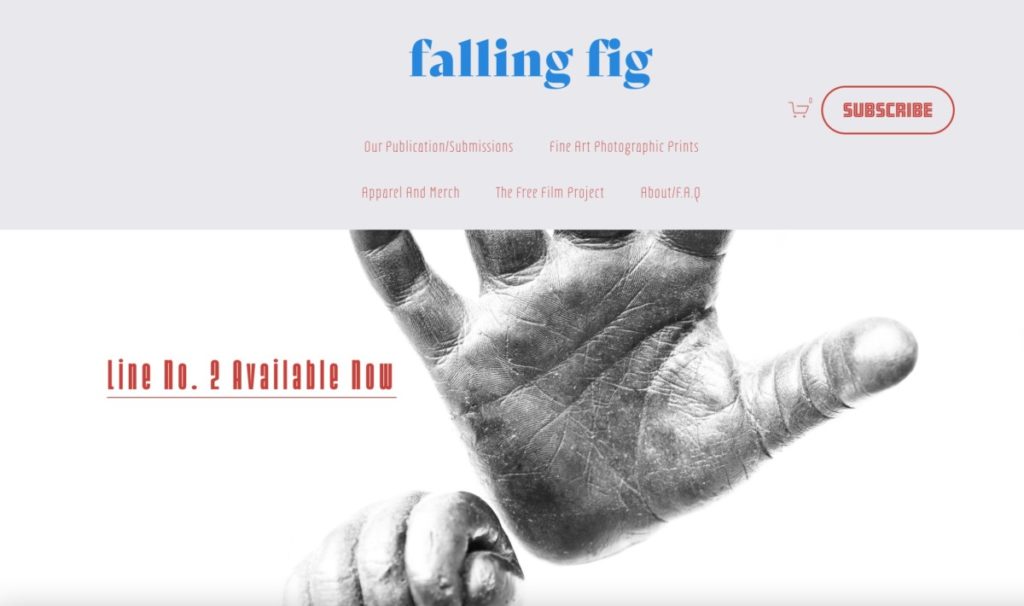Adjunct Faculty Spotlight Series & Book: Anibal Pella-Woo: “Almost 2.0”
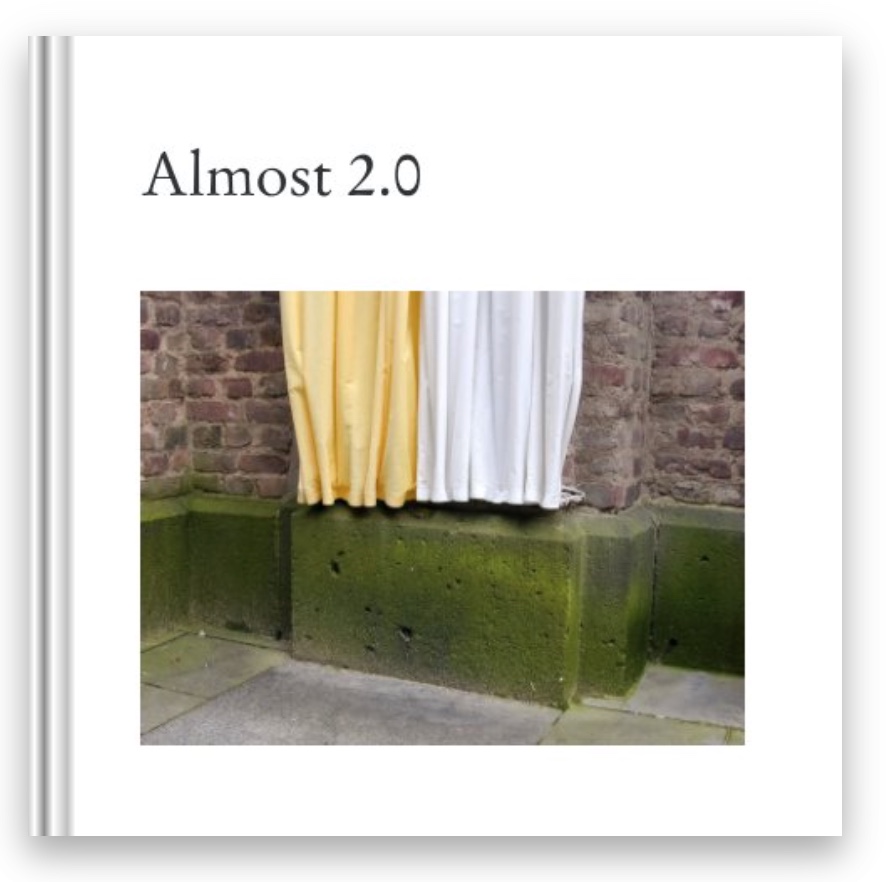
The Department of Visual Arts at Fordham University is pleased to present the first summer installment of the Adjunct Faculty Spotlight Series: Anibal Pella-Woo: Almost 2.0. As well as being the first offering of the season, this project is the inaugural publication for Hayden’s Books. Hayden’s Books will be producing an ongoing series of publications focusing on artist projects, research, critical writings, and works in progress. This publication series honors Hayden Hartnett, a much-loved visual arts major. Please stay tuned over the weeks to come as members from the Department of Visual Arts adjunct faculty and artists at large share samplings of their production with the Fordham community in our Hayden Hartnett Project Space (online) and in this exciting new book series.
The Fordham University Galleries are open to the general public provided that visitors complete a temperature check and brief screening according to university health protocols (the gallery is accessible for those on campus registered with VitalCheck). Additionally, our gallery website will continue to feature a robust selection of offerings from the different areas of study offered in the Department of Visual Arts: Architecture, Film/Video, Graphic Design, Painting, and Photography. Stay tuned for online presentations, discussions, and public dialogues coming this summer as our gallery website functions as a launching platform for a thoughtful engagement with the issues of our times.
Artist Statement:
2.0: “used post-positively to describe a new and improved version or example of something or someone.”
In 1999, I bought my first digital camera. It produced a 1.92-megapixel image file.
Almost 2.0
Book Link
New book: 2021 Senior Thesis Exhibitions
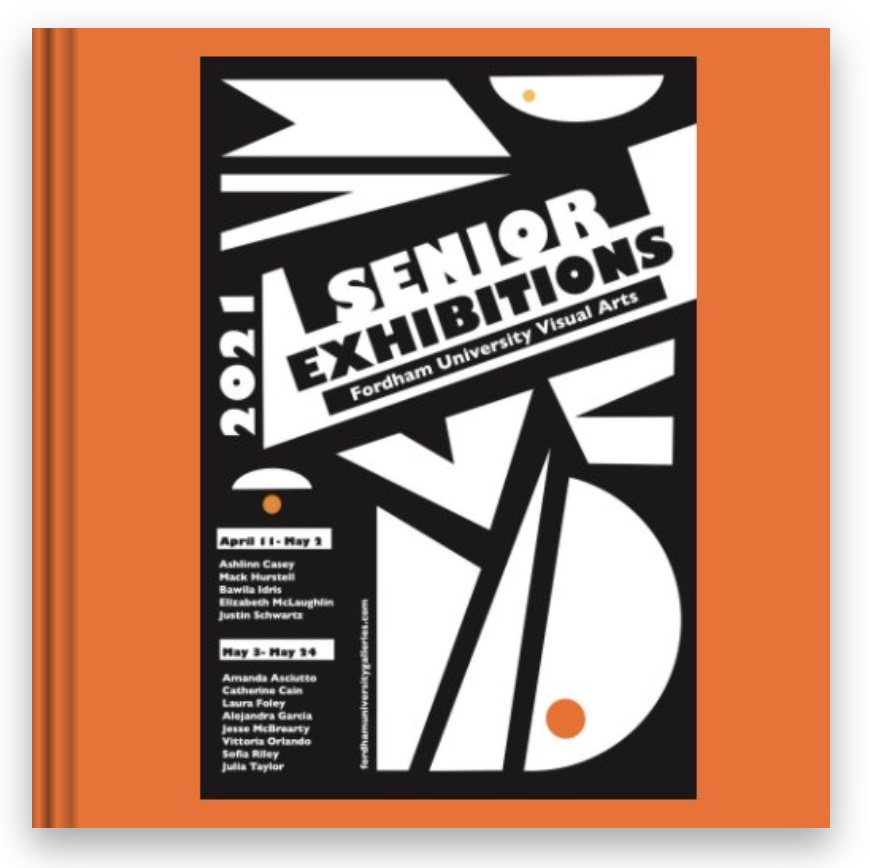
Hot off the press—the 2021 Senior Thesis Exhibitions book by Amanda Asciutto, Catherine Cain, Ashlinn Casey, Laura Foley, Alejandra Garcia, Mack Hurstell, Bawila Idris, Jesse McBrearty, Elizabeth McLaughlin, Vittoria Orlando, Sofia Riley, Justin Schwartz, and Julia Taylor is now available. Edited by Stephan Apicella-Hitchcock with a fantastic cover design by Natalie Norman-Kehe. 142 pages of amazing work by our graduating artists!
2021 Senior Thesis Exhibitions: Small Square, 7×7 in, 18×18 cm, 142 pages is available to preview and purchase here.
New Books—Digital Photography Volumes 2 & 3 Out Now
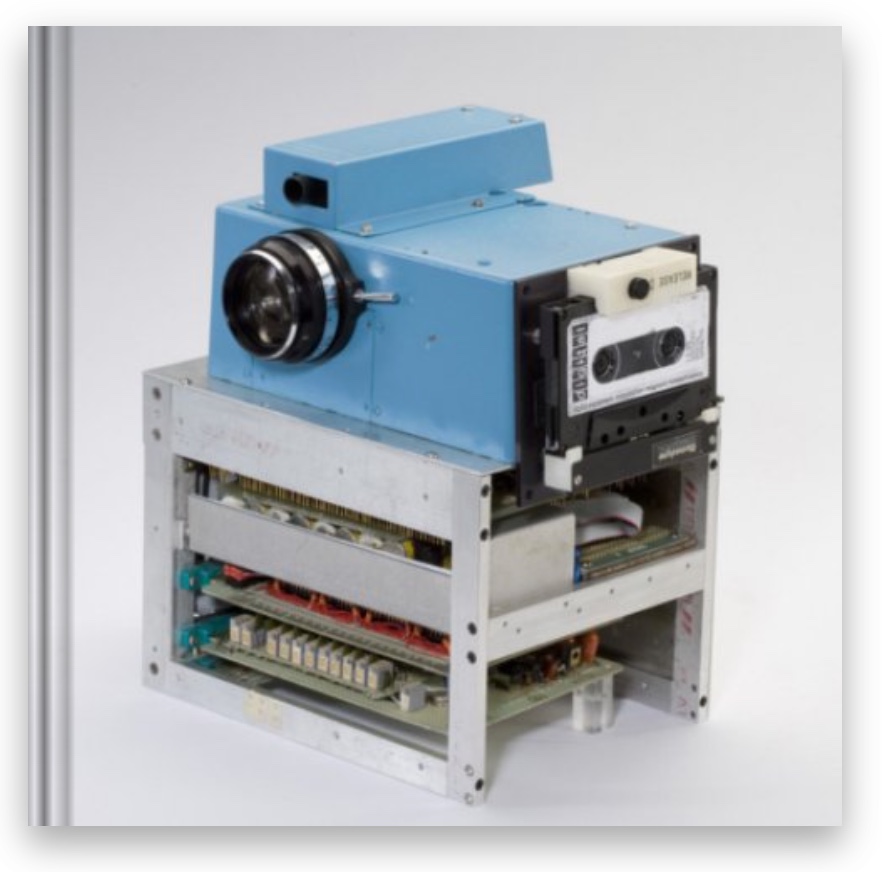
The speed at which one can learn the principles of traditional analog photography during a typical school semester is relatively quick. Things are humming along smoothly by week number seven, with students having a working understanding of camera operations, film processing, and the development of contact sheets and prints. Around week seven, we begin to switch gears from focusing on the technical to concentrating on meaning and communication strategies. The remaining eight weeks are devoted to exploring what one wants to say about the world, how to go about it, and how to read and discuss photographs.
The speed at which one can learn the principles of digital photography is absurdly accelerated compared to traditional photography. Within the first five classes, we are already up and running and understand camera usage and how to employ the computer for image management, adjustment, and output.
Three months ago, these students were pushed into the deep end of the photographic pool of digital photography and asked to swim almost immediately. They rose to the challenge admirably. Their selections for this book represent their speedy technical proficiency; moreover, their images show their intelligence, distinct personalities, and concentrated engagement with the world.
Enough said, enjoy! —Stephan Apicella-Hitchcock
New course: Phone to Book
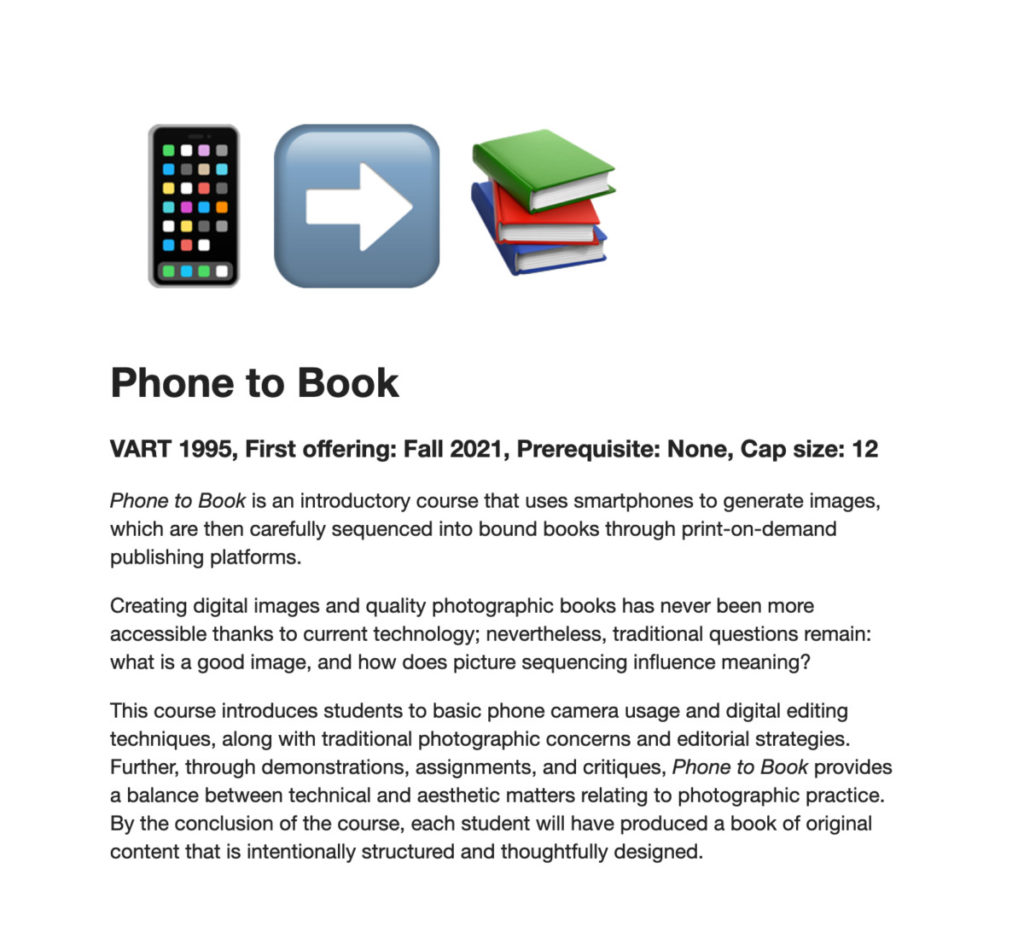
Adjunct Faculty Spotlight Series: Dickson Despommier: Photographs
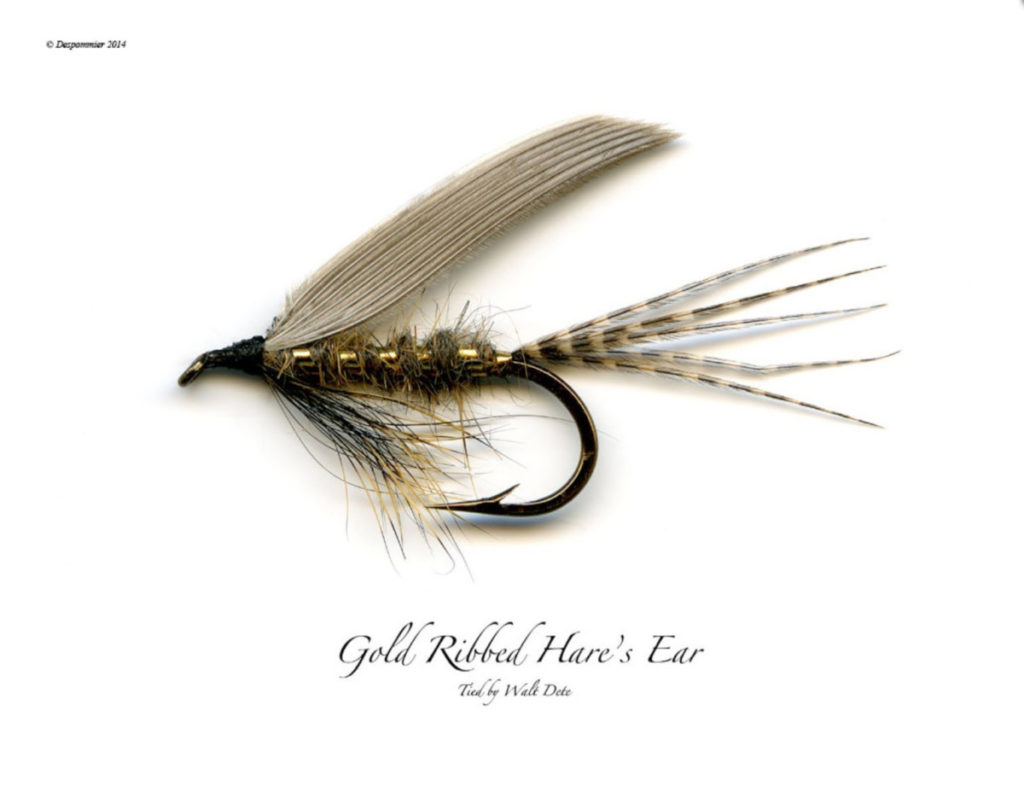
Adjunct Faculty Spotlight Series: Dickson Despommier: Photographs
The Fordham University Galleries Online
Fordham University at Lincoln Center map
113 West 60th Street at Columbus Avenue
New York, NY 10023
fordhamuniversitygalleries
The Department of Visual Arts at Fordham University is pleased to present the first spring installment of the Adjunct Faculty Spotlight Series: Dickson Despommier: Photographs. Over the weeks to come, members from the Department of Visual Arts adjunct faculty will be sharing samplings of their production with the Fordham community.
Currently, the Fordham University Galleries are closed to the general public in response to COVID-19 (open for those on campus registered with VitalCheck). However, our gallery website will continue to feature a robust selection of offerings from the different areas of study offered in the Department of Visual Arts: Architecture, Film/Video, Graphic Design, Painting, and Photography. Stay tuned for online presentations, discussions, and public dialogues coming this spring as our gallery website functions as a launching platform for a thoughtful engagement with the issues of our times.
Dickson Despommier: Statement
The salmon and trout flies that are shown in this collection are superb examples of the craftsmanship of fly tying produced by two of the most highly praised and internationally recognized masters of the art form, Warren Duncan of St. John, New Brunswick, Canada, and Walt Dette of Roscoe, New York.
The images were produced by imaging each fly with a high-resolution scanner (Epson Perfection V750 PRO), then spending many hours on the computer “cleaning them up” and applying the names of each in script using Adobe Photoshop.
My passion for nature began when I was a kid, like so many others who also have developed a deep attachment to the natural world. At around the age of seven or eight, I began exploring my surroundings. I would wander through the tall grass fields near my house in northern California, collecting things that nature provided just for me (or so I thought) – bird’s nests, sometimes with the eggs still inside them, spiders of all sizes, tadpoles, and frogs, caterpillars, cocoons and butterflies, and a million other creepy crawlies, many of which were strictly prohibited from coming inside the house. Reluctantly, back into the fields they went. When I was 11, my family moved to New Jersey. My father and his two brothers were ardent fishers, casting their lines into the salty and brackish waters around their hometown of New Orleans (where I was born). In New Jersey, my dad joined the Oradell reservoir fishing fraternity.
Nearly every Sunday morning in the summer, he enjoyed the solitude of sitting along that lakeshore, firmly ensconced on his folding chair next to several solid fiberglass bait-casting rods propped up by forked sticks that were embedded in the muddy bank. He was a worm dunker most of his life but made the switch to lures when we bought a summer cottage in upper New York State. Meanwhile, back at the reservoir, he often did not catch anything, but occasionally would come home with a mixed stringer of perch, crappie, sunnies, and the occasional largemouth bass. Good eats! I was always impressed with his stick-to-itiveness and dedication to the sport, despite his low frequency of successes. When I became his fishing partner, I learned that it was not only about the catching that mattered. We shared many quiet days and some all-nighters on nearby lakes, again with mixed results. Nonetheless, when it was time to go home, we always expressed to each other how good it was to be off by ourselves surrounded by the beauty of the natural world. Few words were ever spoken, but I could feel that we both deeply appreciated the time we spent together.
In the meantime, my trusty bicycle allowed me the freedom to wander in ever-increasingly wider circles away from my apartment complex in Dumont. Eventually, I had my first encounter with a genuine trout stream, the Tenekill Brook in Demarest, New Jersey (see: Waist Deep In Water). It was love at first sight. As I matured, it was inevitable that I would take up some form of recreation that involved being outside for long periods of time. Trout fishing was my first and only choice, and it still is. I went off to college and gravitated towards the natural sciences, becoming a research parasitologist after graduating from the University of Notre Dame with a Ph.D. degree in microbiology. When I finished my post-doctoral years at The Rockefeller University in the late 1960s, I was fortunate to be asked to join the faculty at Columbia University’s medical school. I have been there ever since. The years flew by (where the hell did they go?), and I am now emeritus professor of microbiology and public health.
My interest in stream ecology arose early on during my undergraduate days. I joined Trout Unlimited after returning to the East Coast and became friends with a small group of dedicated fly fishers. Four of us formed an education group and developed a 13-week survey course on stream ecology for adult learners. We called the course “We All Live Downstream”. We offered it in multiple places over a six-year period during the 1970s. I never lost interest in the subject and began to take pictures each time I went out on the stream. Many of them are part of this website. I also began collecting published scientific studies on subjects related to various aspects of trout stream ecology. I have distilled this literature into the summaries for each section, serving as the foundation for The Living River: Stream Ecology for Trout Anglers. An earlier version was posted on the Catskill Fly Fishing Center and Museum. It is my hope that the information contained within the body of The Living River website will inspire others to become involved in the stewardship of their home waters.
For further information on the exhibition please contact Stephan Apicella-Hitchcock.
The Fordham University Galleries are currently closed in response to COVID-19. In the meantime, please visit our gallery website frequently, as our exhibitions are still underway.
Dickson Despommier Photographs
The Living River: Stream Ecology for Trout Anglers
Waist Deep In Water: Memoirs of a Passionate Angler (PDF download)
For the Visual Arts Department Blog: click here
For the Visual Arts Department Website: click here
Gary Monroe Photographs: South Beach 1977–1986
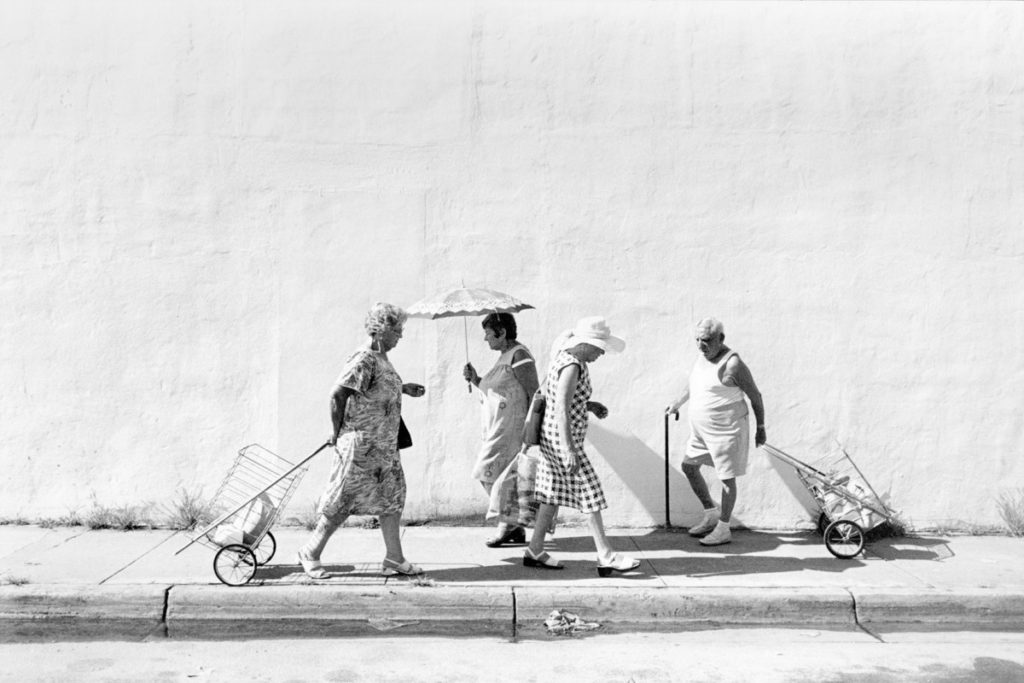
Gary Monroe Photographs: South Beach 1977–1986
Curators: Stephan Apicella-Hitchcock & Joseph Lawton
Fordham University’s Ildiko Butler Gallery is pleased to present the photographs of Gary Monroe. Exhibited here are twenty-one gelatin silver prints made between 1977 and 1986 in South Beach, Florida, of the elderly Jewish community.
In Gary’s words: South Beach was remarkable when I photographed there, which was almost daily. Actually, it was for a longer period, but that decade constitutes my being committed to making visual sense of life there. It was where Jewish people came to be together in their later years. In its way, it was a sacred place. These were the Jewish of the ‘Greatest Generation,’ Holocaust survivors among them; refugees from the cold northeast; working-class retirees. The average age was well into retirement. Ten years later, the Art Deco movement and other forces, including Miami Vice, and economic development, caused the demise of the old-world traditions long before attrition would have taken its toll. The lifestyle vanished as if it had never happened.
Gary Monroe, a native of Miami Beach, received a master’s degree in fine arts from the University of Colorado at Boulder in 1977. Since 1984 he has photographed throughout Haiti, Brazil, Israel, Cuba, India, Trinidad, Poland, France, Russia, Egypt, and in his home state of Florida. He has received grants from the National Endowment for the Arts, Florida Department of State’s Division of Cultural Affairs, Florida Humanities Council, and the Fulbright Foundation. Gary’s publications include The Last Resort, Florida Dreams, Life in South Beach, Miami Beach, and Haiti. He is also the author of numerous books, including The Highwaymen: Florida’s African-American Landscape Painters, Harold Newton: The Original Highwayman, and Silver Springs: The Underwater Photographs of Bruce Mozert. Recently he has been photographing the impact of corporate-driven planning on the Florida landscape.
Image credit: Gary Monroe, Sixth Street by Washington Avenue, 1978
Highlights: Selections from the Senior Seminar in Visual Art
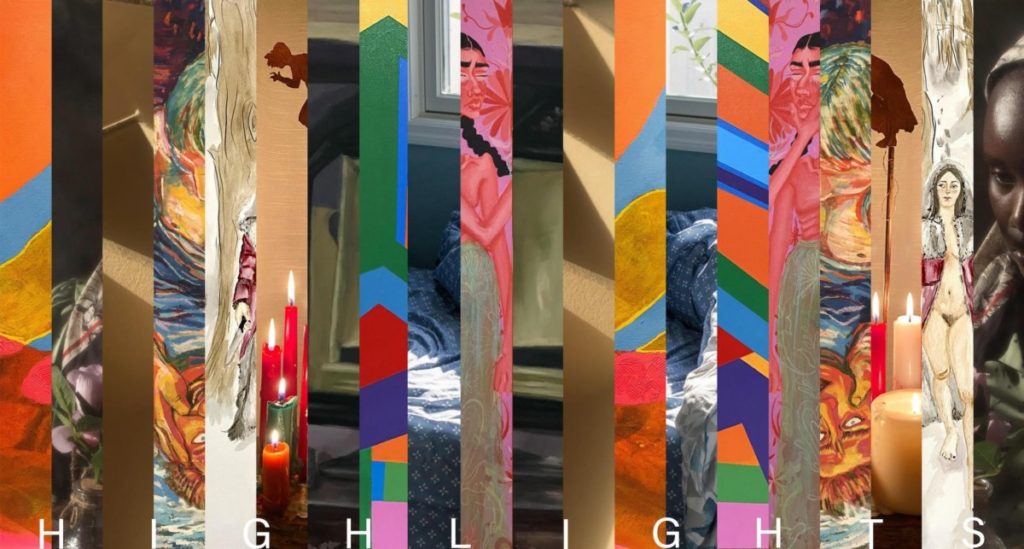
Each fall, Fordham students working on their thesis projects in architecture, graphic design, film & video, painting & drawing, and photography come together for the Senior Seminar to share ideas, give feedback, and develop their unique vision. The semester culminates in the annual Highlights exhibition, featuring a selection of student works across all media.
This year, Amanda Asciutto contributes whimsical watercolor paintings that give traditional fairy tale narratives a feminist twist; Ashlinn Casey offers subtly moody oil paintings of interiors that are clearly lived in but devoid of inhabitants at the moment of depiction; Laura Foley presents a proposal for a sustainably built pavilion inspired by the waves of the Hudson and East River and the hills that once made up the island of Manhattan; and Alejandra Garcia puts forward brightly hued yet often ominous acrylic paintings depicting diosa, a skeletal protagonist who partially reflects Garcia’s experiences growing up as a Mexican American. Mary Hurstell’s quirky paintings of otherworldly bathroom scenes tread the line between the aversion to being seen and the desire to be known and understood; Bawila Idris’s lushly colored videos and photographic portraits navigate the prism of the body, beauty, femininity, race, and identity; and Lizzie McLaughlin’s mixed-medium abstract paintings vibrate with the energy of the psychedelic aesthetic that inspired them. Sophia Riley transforms street scenes from her native San Francisco in semi-abstract acrylic paintings in which bold planes of color teeter and collide; Justin Schwartz creates a tender portrait of his elderly grandmother by photographing the eerily empty suburban house she abruptly left after the pandemic struck; and Julia Taylor plumbs the mysteries of the nineteenth-century Spiritualism movement with multimedia collages and sculptures that suggest peculiar narratives with no clear answers.
These works offer a preview of the virtual solo student exhibitions that will be launched later this spring. To read more about the work, please visit the Fordham Art History Society’s Instagram page Art Ramblings, which is posting reviews by Lilianna Harris, Tess McNamara, Elise Beck, McKenna Meskan, Kassandra Ibrahim, Samantha White, Abigail McClain, Gillian Kwok, and Sarah Hujber.
Curated in collaboration with Casey Ruble, Associate Clinical Professor, Fordham University. For more information, email Professor Ruble.
Art Making in Hell’s Kitchen and Beyond
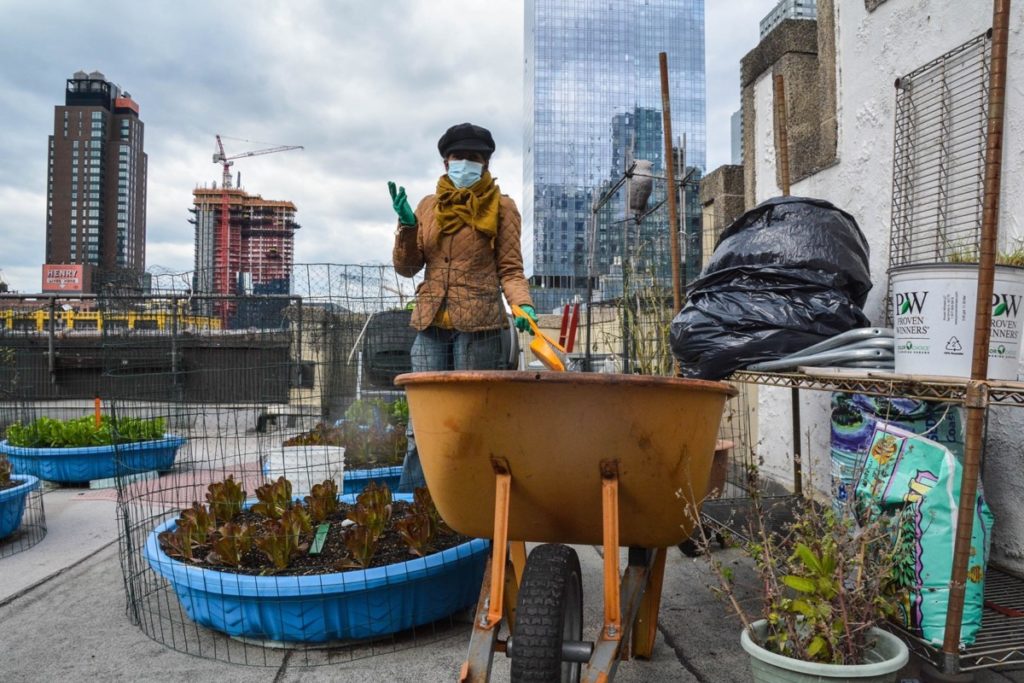
Art Making in Hell’s Kitchen and Beyond Link
Featuring:
Jazmin Ali
Caitlin Bury
Ally Cali
Ethan Coughlin
Valeria Deminova
Emma Giroir
Shannah Harris
Meah Nizan
Tori Pante
Leeza Richter
Evelina Tokareva
Organized by Professor Mark Street
Students were invited to respond to the neighborhoods around FCLC by taking photographs, shooting digital video, painting, and drawing, using posters and text, recording sound, making architectural sketches, or engaging in site-specific performances. Given the vagaries of the pandemic, some chose to focus on locales closer to where they live. Each student is working on both an artistic and a service project and presenting documentation of either or both.
Photo by Leeza Richter
Landscape Photographs at the Ildiko Butler Gallery
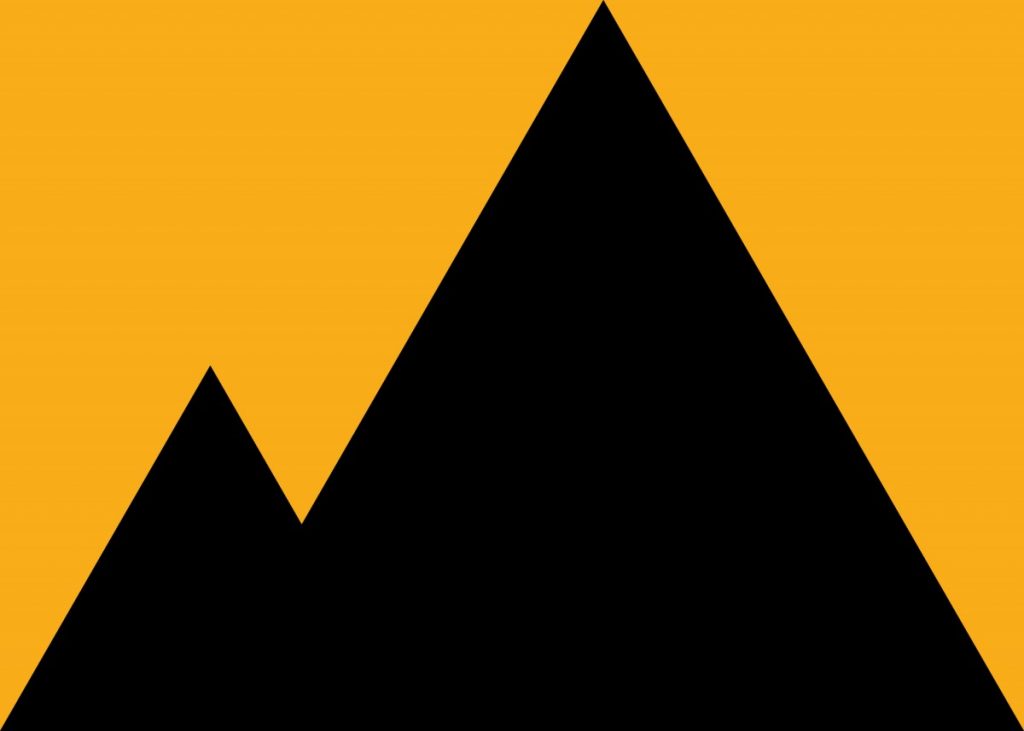
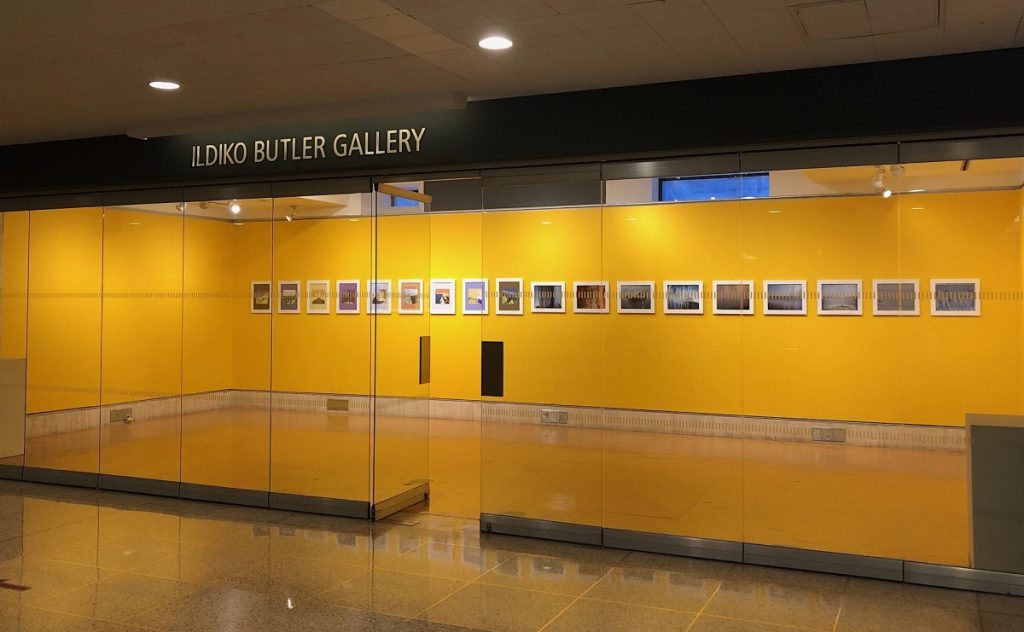
Landscape Photographs
Featuring work by Gabriel Blankenship and Brian & Gareth McClave
Organized by Stephan Apicella-Hitchcock
Fordham University is proud to present a new exhibition, Landscape Photographs, which brings together work from American artist Gabriel Blankenship and British artists Brian & Gareth McClave. This exhibition’s straightforward title might lead one to presume images that conform to traditional expectations for landscapes—beautiful, transcendent, or sublime; moreover, accessible and understood within the genre’s history. The landscapes depicted here are undoubtedly related to the world we know, although the information is translated and parsed in potentially unfamiliar ways. Both Blankenship and the McClaves observe and take inspiration from the world around us, then process and present their information in carefully managed integers.
With Gabriel Blankenship, we see an array of ordinary suburban rooftops, clouds, powerlines, and foliage with different croppings and color schemes. On the one hand, these views are somewhat general, appearing related to a loose snapshot aesthetic filtered through video game technology. Yet, they are engineered and controlled at the smallest decision-making level, and selectively built up pixel by pixel into iconic images. A tension exists between the extreme control exercised during the image construction and the deceptively casual results. Ultimately, these scenes distill and precisely articulate some of life’s quotidian details.
Brian & Gareth McClave utilize computer technology as Blankenship, though their images are abstract in a different manner. The digital slow-scan software that they developed records a picture over time and presents vertical slices of imagery. We view each image both in its entirety as well as chronologically when moving through the image bands from left to right. What might appear initially as a form of digital interference, or potential file corruption, turns out to be discreet stages in the construction of the image. The increments of a time-based narrative are visible, as well as the event in its entirety.
Gabriel Blankenship
Suburban Roof
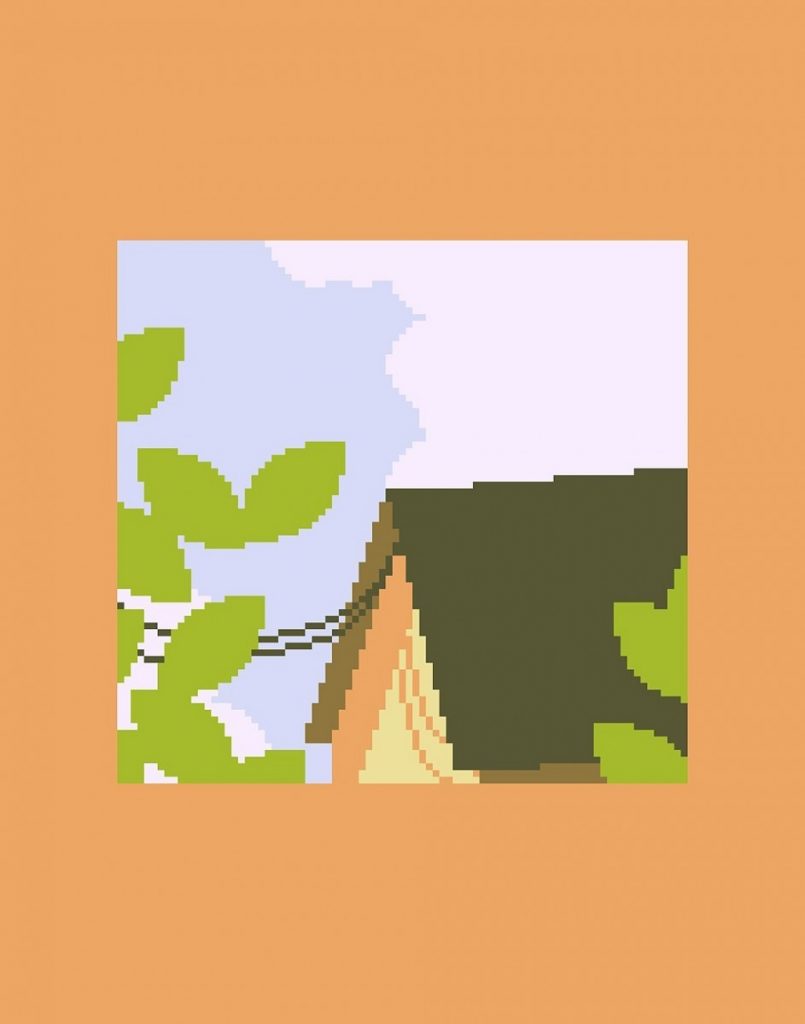
Around 2009, I found myself back at home in rural Pennsylvania unexpectedly. I had been studying photography at Fordham, and had grown accustomed to bringing my camera everywhere. At home, I found myself shooting less, despite carrying a camera, and sometimes didn’t bring my camera at all. Allowing myself to be more present was freeing in a way, but not without tension. I kept finding myself wishing I had taken my camera with me, or would catch myself composing a shot, with nothing to record it.
When I returned home, it was to a development its builders had intended to ensure residents’ privacy, despite a very close proximity to each other. The result was instead isolation, and overall detachment from the surrounding community. Neighbors remained strangers, and I instead became familiar with the mid-90s, suburban architecture of their houses, as seen from my third-story bedroom window.
As I began exploring pixel art, I found the same ideas I was drawn to as a photographer cropping up in my work. Moments I thought I had missed were “developing” in 8 and 16 bits. These are “photographs” I wish I had taken.
Bio
Gabriel Blankenship is a multi-disciplinary artist, specializing in photography, installations, and digital works. He studied photography at Fordham University from 2006 to 2009 and started making pixel art as The Pixelsmyth around 2010 on a shared family computer running Windows XP. Drawing inspiration from early personal computer user interface design, and desktop publishing software, he is interested in exploring ways to bring pixel art off the screen, and into physical space. He works both individually and together with Lancaster, Pennsylvania-based collaborative fourhead.
What is pixel art?
While the aesthetics of pixel art are firmly rooted in the low resolution graphics of video games and computer software of the late 20th century, the mechanics are ancient. Using similar principles to mosaic tilework, textile weaving, and embroidery, each pixel is individually placed, economically expressing form, color, and value. Limited memory and processing speeds restricted early video game and computer graphics designers in resolution and palette, leading to works like the simple, tile-based designs of Nintendo’s Super Mario Bros for the NES, and Susan Kare’s approach to the graphical user interface of Apple’s Macintosh. As computing power increased, image resolutions increased, eventually eliminating the technical need for such an efficient design language. Pixel art has maintained popularity through vibrant internet communities, producing work ranging from simple 8-bit compositions, to full photorealistic renderings.
Brian and Gareth McClave
Digital Slow-Scan Photographs
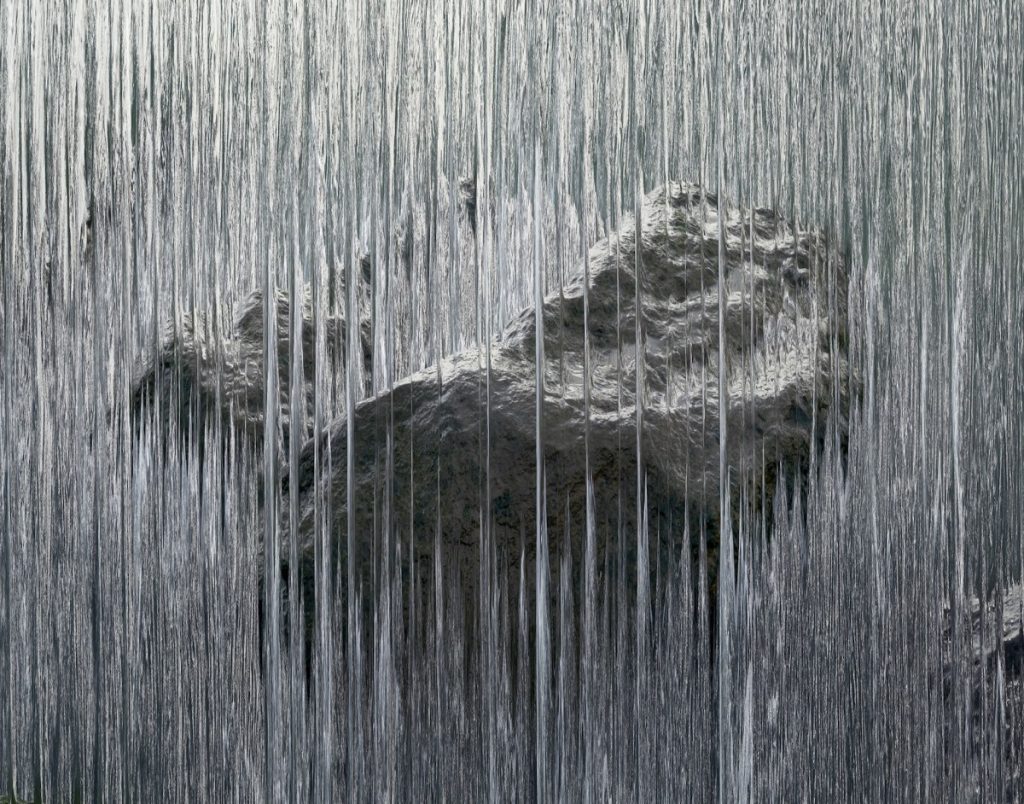
The photographic work of Brian and Gareth McClave represents several years of development of a new photographic process that captures reality in a slow scanning motion across a scene. To do this the brothers developed new software that can take a visual slice through thousands of sequential images of a scene to generate an image that reveals the passing of time as the viewer’s eyes pan across the final photograph from left to right. This is a new twist on the traditional photographic long exposure, whereby the moments of time do not all merge together on top of each other but rather line up in sequence. This offers up the narrative of the scene in the same way as a line of words in a sentence whereby we can gain meaning and insight as we read from left to right across the page.
From a technological perspective the combination of time-lapse photography and digital sampling present a kind of visual encryption of a scene. The image invites the viewer to decode what is presented as a strange, alienating and futuristic environment back into something familiar. The given titles offer clues but no answers. On an aesthetic level the images invoke modernist paintings where individual points of colour, converging perspectives, or drips of paint are collected on the canvas to create an overall effect that distances the viewer from the subject by revealing it in a different light. It is the way that this different light is collected and then redistributed across the print that points to the photographic heritage from which the technique is drawn.
Those images created with a static camera collect the movement of the subject through the frame as each line is triggered, like a Muybridge frame, to capture and reveal an aspect of a scene that might otherwise be missed. This is especially insightful where natural elements such as the movement of the tides are seen to ebb and flow through the course of the day-long exposure and therefore across the duration of the print. On the other hand, when the camera is moving and capturing the landscape through which it passes, the image simultaneously portrays time and distance. This can leave the viewer in a quandary as the constantly changing viewpoint and the constantly changing viewed are combined into a single, sometimes chaotic image. But the chaos suggests or creates something new: a chronographic representation of time that captures the pace and instability of an increasingly mobile age.
In offering a view of a day, or a week, or a year, in a single, but complex, glance, these images allow us to take a step back from the daily densities of our lives and provide an opportunity to lose ourselves in these strange but familiar, calm and cryptic, abstract journeys.
Darren Umney, 2015
Brian and Gareth McClave: Digital Slow-Scan Photographs Website
